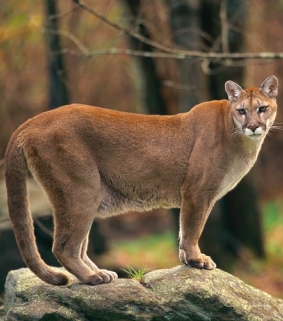Northwest cougar encounters on the rise
Published 12:48 pm Tuesday, August 7, 2018

- A cougar in the wild.
Northwesterners are hearing a lot about cougars lately.
Trending
Since May, an extremely rare fatal attack in the Washington Cascades, a Willamette Valley pool party interrupted by a wandering cat and a viral Facebook video of a mountain lion lounging in a southern Oregon woman’s living room have made headlines across the region. In July, the Willapa Harbor Herald reported cougar sightings in South Bend.
Are the Northwest’s mountain lions acting out of character this summer?
The Oregon Department of Fish and Wildlife’s Derek Broman says “no.” But they are adapting to a gradual shift in their range.
Trending
“They’ve exceeded the maximum number of animals that the habitat can support. Younger animals are dispersing to lower-quality habitats. They’re exploiting urban areas and doing quite well,” said Broman, the state carnivore biologist. “Carrying capacity has been reached.”
And when mountain lions move into areas where people aren’t as accustomed to seeing them, it can lead to more sighting reports, news stories and interest on social media. “They get more attention because they are unusual,” Broman said.
In May, the Seattle area saw a fatal cougar attack. Two cyclists in North Bend were attacked — one fatally — by a cougar, in an incident that a Washington Department of Fish and Wildlife official called “incredibly abnormal.” A necropsy performed by Washington State University released late last month indicated that the male cat was lean but not emaciated.
“The cause of aggressive behavior reported in this cat was not evident,” the necropsy found.
Just last week, Springfield residents had their own cougar encounter. Upon spotting a mountain lion in their backyard in the middle of the afternoon, a group of teenagers called the police. With the help of a local game tracker, the animal was located and euthanized. Officials expressed concern about the cat’s uncharacteristic daytime activity and the normally skittish animal’s apparent disregard for human presence in the area.
And in early July, an Ashland woman posted on Facebook about a strangely amicable mountain lion encounter in her home.
“There’s a mountain lion in our living room,” Lauren Taylor wrote earlier this month. “This is wild.”
Taylor did not respond to interview requests. In her July 7 Facebook post, she wrote that she believes the cat entered through an open door into a room that “has huge plants & stairs built around real tree branches … she likely didn’t even realize she was indoors until she was inside.”
After discovering the animal in her home, Taylor wrote, she calmly “meditated on” how to safely coax the animal back outside. Taylor says she “communicated using feline-speak eye blinking to calm her” and “sent telepathic pictures of routes out of the house.”
Ultimately, after poking around her living room and taking a cat nap, Taylor said the lion exited through an open door and disappeared into the night.
Michelle Dennehey, a wildlife communications coordinator at the Oregon Department of Fish and Wildlife, noted that despite a viral photo and video album on social media, this incident has not been confirmed by the department.
Dennehey pointed out just how rare cougar attacks are, saying, “We’ve never had a confirmed attack by a wild cougar in Oregon.” That’s a complete lack of any attacks, not just a lack of fatal attacks.
As for the Springfield incident, Dennehey said her agency deals with similar situations regularly.
“When a cougar exhibits certain behavior, like being seen repeatedly in daylight or killing pets,” Dennehey said, “ODFW advises that they’re euthanized.”
According to WDFW, if you encounter a cougar:
• Stop, stand tall and don’t run. Pick up small children. Don’t run. A cougar’s instinct is to chase.
• Do not approach the animal, especially if it is near a kill or with kittens.
• Try to appear larger than the cougar. Never take your eyes off the animal or turn your back. Do not crouch down or try to hide.
• If the animal displays aggressive behavior, shout, wave your arms and throw rocks. The idea is to convince the cougar that you are not prey, but a potential danger.
• If the cougar attacks, fight back aggressively and try to stay on your feet. Cougars have been driven away by people who have fought back.
WDFW responds to cougar and bear sightings when there is a threat to public safety or property. If it is an emergency, dial 911.









